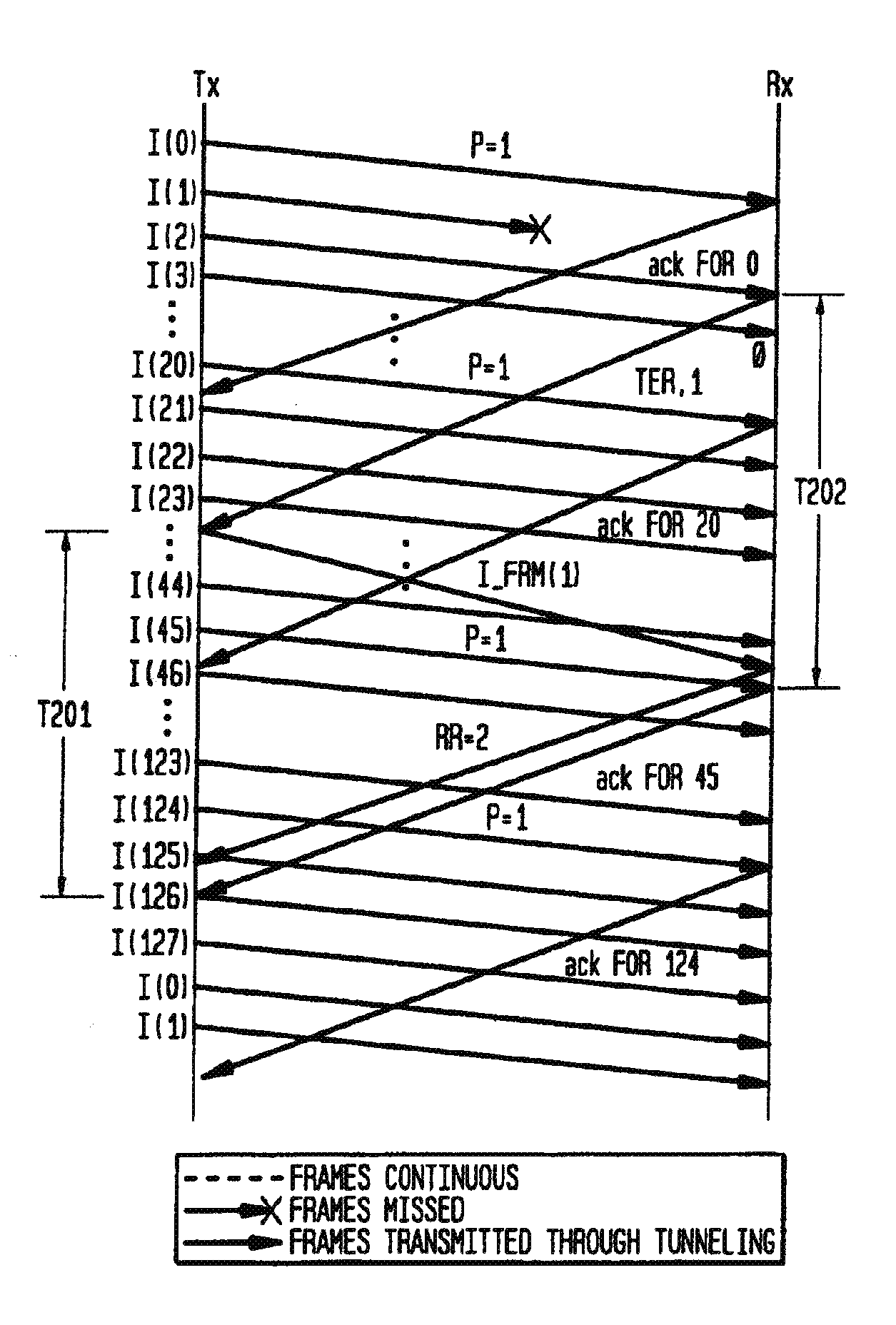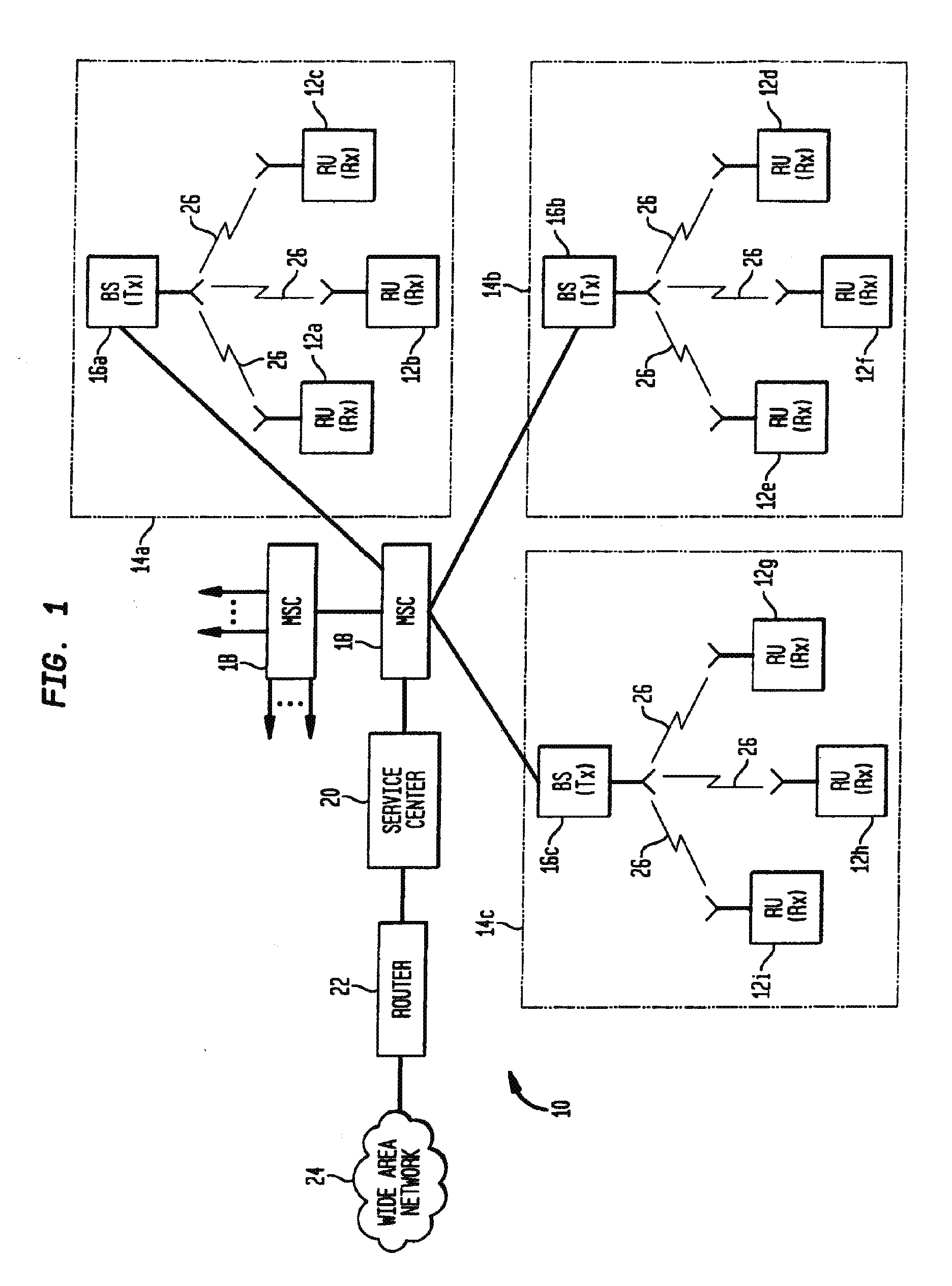Data Link Layer Tunneling Technique for High-Speed Data in a Noisy Wireless Environment
a data link and wireless environment technology, applied in the field of wireless communications, can solve the problems of data link layer window being neither the sender nor the receiver can transmit or receive, and the data link layer window cannot be filled at a very fast rate, so as to improve the throughput of high-speed data
- Summary
- Abstract
- Description
- Claims
- Application Information
AI Technical Summary
Benefits of technology
Problems solved by technology
Method used
Image
Examples
Embodiment Construction
[0020]With reference now to the drawings, FIG. 1 depicts a conceptual diagram of a wireless communications network (WCS) generally characterized by the reference numeral 10. The WCS 10 serves a number of wireless remote units (“RU”). 12.sub.A-I within a geographic area partitioned into a plurality of spatially distinct regions called “cells” 14.sub.A-C. Each cell 14 includes a respective base station (“BS”) 16.sub.A-C, and a boundary represented by an irregular shape that depends on terrain, electromagnetic sources and many other variables. The remote units communicate via one or more wireless access technologies (e.g., TDMA, CDMA, FDMA, etc.), providing one or more services (e.g., cordless, cellular, PCS, wireless local loop, SMR / ESMR, two-way paging, etc.) with signals representing audio, video, high speed data (HSD), multimedia, etc. Each BS 22 communicates with a Mobile Switching Center (MSC) 18, also known as a mobile telephone switching office, in accordance with well-known st...
PUM
 Login to View More
Login to View More Abstract
Description
Claims
Application Information
 Login to View More
Login to View More - R&D
- Intellectual Property
- Life Sciences
- Materials
- Tech Scout
- Unparalleled Data Quality
- Higher Quality Content
- 60% Fewer Hallucinations
Browse by: Latest US Patents, China's latest patents, Technical Efficacy Thesaurus, Application Domain, Technology Topic, Popular Technical Reports.
© 2025 PatSnap. All rights reserved.Legal|Privacy policy|Modern Slavery Act Transparency Statement|Sitemap|About US| Contact US: help@patsnap.com



